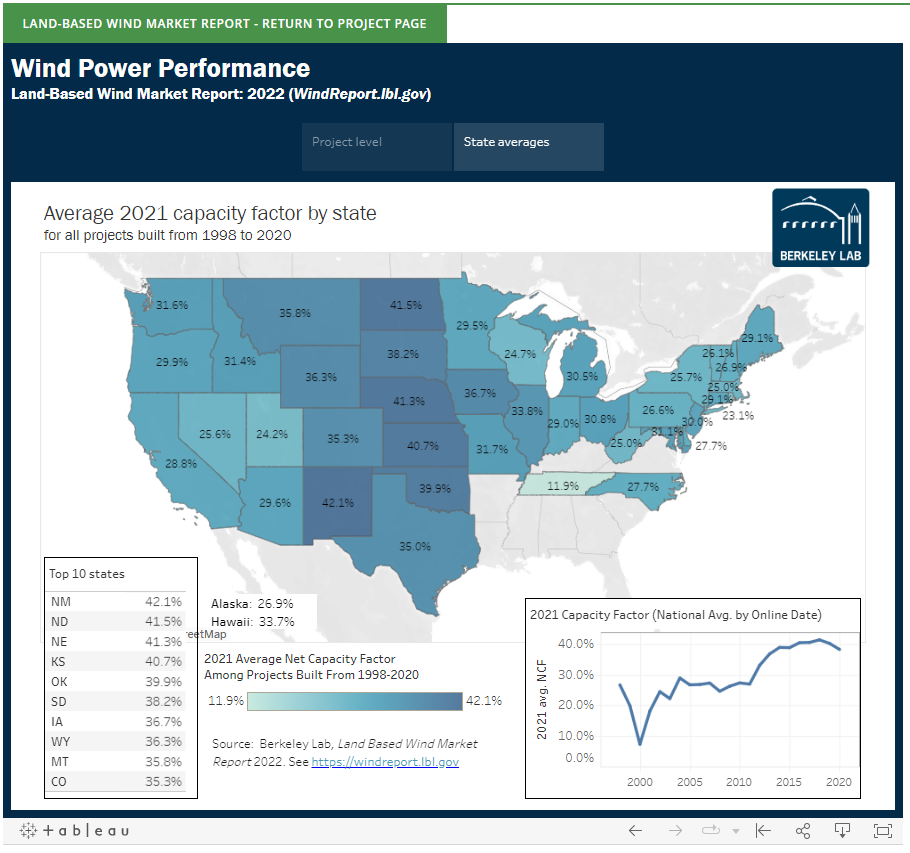Not a single Minnesota wind facility generated above 45 percent of its potential output
Data from Lawrence Berkeley National Labs shows that no Minnesota wind facility produced more than 45 percent of its potential output in 2021.

Several facilities in neighboring states met the 45 percent threshold, but only one facility, a small 38-megawatt (MW) facility in Iowa, operated above a 50 percent capacity factor, producing 52.3 percent of its potential output.

Data from the U.S. Energy Information Administration shows that Minnesota had 4,695 MW of wind capacity at the end of 2021. Digging into the Lawrence Berkeley data shows us that only 1,153 MW of Minnesota wind facilities, or 24.5 percent, operated above a 40 percent capacity factor.
Looking at the statewide average, Minnesota wind facilities produced 29.5 percent of their potential output.

This is relevant for several reasons. As I’ve written about in the past, lower productivity from wind turbines means that the cost of generating electricity from them is higher. It is also interesting to note that the capacity factor for older wind turbines, those put in service before 2011, performed much worse than those put in after.
This could be an artifact of better turbine technology coming online in the early 2010s, or, as some academic research has found, it could show that turbine production drops off after the first ten years when the federal subsidies for the wind turbines expire.